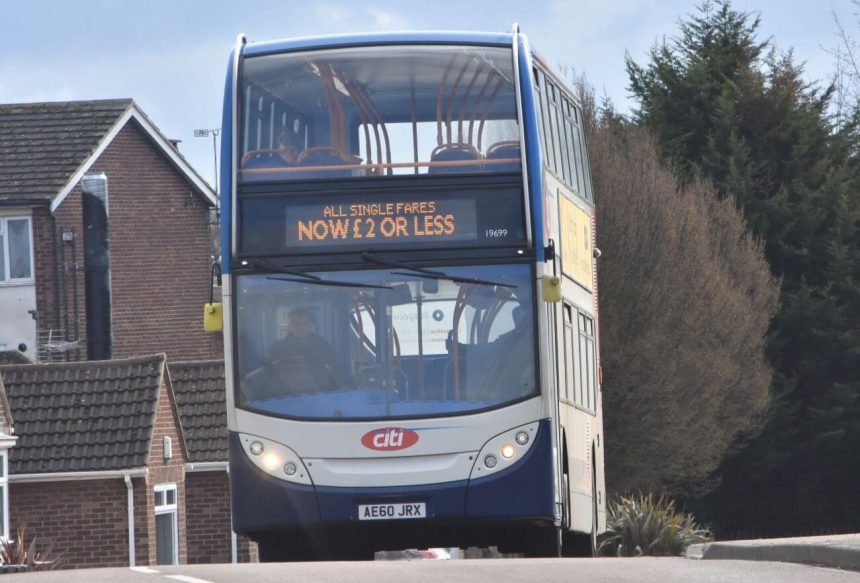The £2 Bus Fare Cap in England contributed to an approximately 5% increase in bus patronage, according to the Department for Transport’s (DfT) report into the scheme.
The newly published research analysing the effects of the first 10 months of the scheme also admitted the value-for-money (VfM) aspect of the initiative was “challenging to assess”.
Produced by SYSTRA and Frontier Economics for DfT, the document’s conclusions include that the cap was responsible for roughly 5% out of the overall 13% increase in patronage year-on-year in England outside London in the period January-October 2023.
On value for money, the “preliminary benefit-cost ratio” was evaluated to be 0.71-0.9.
However, this VfM figure did not include all benefits of the scheme. The authors add: “Fieldwork suggests these include the savings to people who switch modes to buses and the wellbeing benefits of reducing the cost of bus travel for all passengers who would have used the bus even without the fare cap.
“There are also distributional impacts. Preliminary analysis of the potential scale of the wellbeing effects alone suggests it is reasonable to believe the BCR is at least above 1 (categorised as low VfM).”
The work found, predictably, that savings and impacts varied significantly across passengers, given that, prior to the scheme, most of the trips were made using concessionary travel passes or period tickets.
One of the aims of the government in introducing the fare cap was to help with the cost of living, and the research suggests this was achieved. It read: “The survey carried out for this evaluation suggests that 67-73% of people who would have travelled using a different transport mode before the fare cap have saved on their travel costs due to the £2 Bus Fare Cap. Those on lower incomes have generally seen a greater positive financial impact.”
Also noted is that the government spend on the scheme was lower than planned despite higher-than-expected operator participation. The planned budget for phases 1 to 3 (January-October 2023) was £245m – 14% higher than the actual spend of £210m.
The report comments: “The evidence suggests that the scheme has achieved its strategic objectives. It has reduced the cost of living and has increased bus patronage, particularly for those on lower incomes.
“The main beneficiaries of the scheme are likely to be people who used single tickets prior to the scheme and would have made their bus journeys even without the £2BFC.
“There are also benefits for those making new trips as a result of the lower cost of bus travel, the majority of whom are likely to have shifted from other modes, mainly the car, and travel for leisure rather than work or educational purposes.”
The £2 fare cap scheme was taken up by more than 140 operators outside London – where it was not rolled out. This represented around 90% of the market in terms of patronage, the report says.
It was initially due to end on 31 March 2023 but was extended several times until it was replaced by the £3 equivalent in January 2024.
The report follows up on interim findings from May 2023.



























